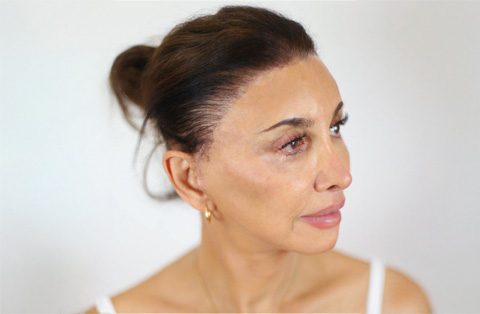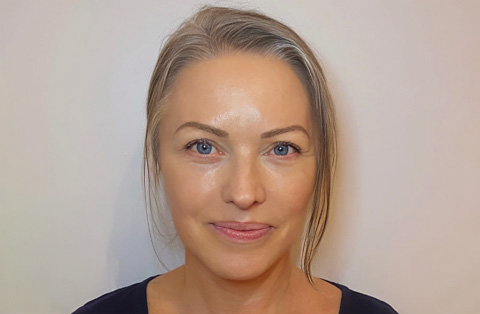Do you want a more sculpted and defined jawline?
Jaw contouring can help you achieve the sharp, balanced look you've always desired. This cosmetic procedure reshapes the jawline, providing a more defined facial profile that enhances your overall appearance.
In this article, we'll explore everything from how the procedure works to what results you can expect. Learn about the benefits, the recovery process, and whether jaw contouring is the right option for you.
Discover how jaw contouring can redefine your facial features and boost your confidence. Keep reading to take the next step towards your ideal look.
What is jaw contouring surgery?
Jaw contouring surgery is a plastic surgery that reshapes and defines the jawline to create a more balanced and sculpted facial appearance. It involves altering the bone structure or soft tissues of the jaw, depending on the patient's goals. This procedure can reduce a prominent jaw, enhance a weak jawline, or correct face asymmetry.
Surgeons may use techniques like shaving or repositioning the jawbone, along with implants or fillers to achieve the desired results. Jaw contouring can be performed for aesthetic reasons or to correct structural issues, offering a more defined, youthful profile.
Surgical vs. non-surgical options for jaw reshaping
Jaw reshaping can be achieved through both surgical and non-surgical options, depending on the desired results, recovery time, and the extent of changes needed.
Surgical Options:
Surgical jaw contouring involves more permanent and dramatic changes. It typically includes bone reshaping, reduction, or augmentation, often using implants. This option is ideal for those seeking significant alterations to their jawline, such as correcting asymmetry, reducing a square jaw, or enhancing a weak chin. Results are long-lasting, but the procedure requires general anesthesia and involves a longer recovery period.
Non-Surgical Options:
Non-surgical jaw contouring uses injectable treatments like dermal fillers or Botox to reshape the jawline. Botox can relax the muscles, reducing the appearance of a bulky jaw, while fillers can add volume to create definition. These options are less invasive, have minimal downtime, and offer temporary results lasting from several months to a year. Non-surgical options are best for subtle changes or those looking for short-term enhancement without surgery.
Both approaches have their benefits, depending on your goals and comfort with recovery time.
Who is a good candidate for jawline contouring surgery?
A good candidate for jawline contouring surgery typically meets the following criteria:
Desires a more defined or balanced jawline: Candidates may want to enhance a weak jawline, correct asymmetry, or reduce a prominent or square jaw.
In good overall health: Candidates should not have any serious medical conditions that could affect healing or increase surgical risks.
Realistic expectations: Candidates should have a clear understanding of the potential outcomes and limitations of the surgery.
Non-smoker or willing to stop: Smoking can impede the healing process, so candidates should either not smoke or be prepared to quit before and after the procedure.
Seeking permanent results: Jawline contouring surgery is ideal for those wanting long-term changes, as the results are permanent and cannot be easily reversed.
Consultation with a qualified surgeon can help determine if jawline contouring is the right option for achieving the desired look.
What are the different techniques used in surgical jawline contouring?
Surgical jawline contouring involves several techniques, depending on the desired outcome and the patient's anatomy. Here are the most common methods:
1. Jaw Reduction (Mandibular Reduction)
This technique reduces the size and width of the jaw to create a slimmer, more refined profile. Surgeons remove or shave down excess bone along the jawline to achieve the desired shape.
Ideal for individuals with a square or overly prominent jaw.
2. Jaw Augmentation (Implants)
For those with a weak or receding jawline, implants are used to add volume and definition. Surgeons place silicone or other biocompatible implants to create a stronger, more sculpted jawline.
This technique is commonly used to enhance the jaw’s symmetry and balance.
3. Chin Surgery (Genioplasty)
Genioplasty involves reshaping or repositioning the chin bone. This can complement jaw contouring by improving the chin’s projection and overall facial harmony.
It can be performed to move the chin forward, backward, or reshape it for more balance.
4. Jawline Liposuction
Liposuction targets excess fat along the jawline and under the chin to create a more defined contour. It’s often combined with other procedures for a sharper jawline.
Suitable for individuals with excess fat rather than bone structure concerns.
5. Orthognathic Surgery
For functional or severe cosmetic issues, orthognathic (jaw correction) surgery can be performed. This procedure repositions the upper and lower jaw to correct alignment, improve function, and enhance facial aesthetics.
Often used in cases of jaw misalignment or significant asymmetry.
Each technique is tailored to the patient’s goals and anatomy, providing long-lasting results. Combining techniques may further enhance the overall outcome.
How much does jaw contouring surgery cost?
The cost of jaw contouring surgery can vary significantly based on several factors, including the complexity of the procedure, the surgeon's experience, geographic location, and whether additional treatments are required. On average, the cost ranges from $6,500 to $20,000 or more.
Here’s a breakdown of factors that influence the price:
Type of Procedure: Simple procedures like jawline liposuction tend to be less expensive, while more complex surgeries, such as orthognathic surgery or jaw reduction, are typically at the higher end of the range.
Surgeon’s Expertise: Highly experienced surgeons may charge more due to their reputation and advanced skills.
Location: Costs can vary by city or country, with procedures in major urban centers typically being more expensive.
Additional Fees: This can include anesthesia, facility fees, and post-operative care.
Since jaw contouring is usually considered a cosmetic procedure, insurance generally does not cover it unless it addresses functional issues.
What can I expect during and after jawline contouring surgery?
Jawline contouring surgery is a highly personalized procedure designed to enhance facial structure and create a more defined jawline. Whether you're considering the surgery for aesthetic or corrective reasons, it's important to know what the experience involves. From the surgical process to recovery, understanding each step can help you feel more confident and prepared.
The Surgical Process
Jawline contouring surgery typically lasts between 1 to 3 hours, depending on the complexity. It is performed under general anesthesia to ensure comfort. The surgeon will make incisions either inside the mouth or along natural creases to minimize visible scarring. Depending on the technique used, bone may be reshaped, excess fat removed, or implants placed to create the desired jawline. Afterward, the surgeon will close the incisions and apply bandages to support healing.
Recovery Timeline
First Few Days: Expect swelling, bruising, and some discomfort. Pain is typically manageable with prescribed medications. You may need to follow a soft food diet and avoid strenuous activities.
First Week: Swelling will gradually decrease, though some may persist. Sutures are typically removed, or dissolvable ones will start breaking down.
2 to 4 Weeks: Most swelling and bruising should subside, and you can gradually return to normal activities.
3 to 6 Months: The final results will become more apparent as residual swelling completely fades, and the jawline fully heals.
Following your surgeon’s care instructions closely will ensure a smooth recovery and optimal results.
Potential risks and complications of jaw surgery
Like all surgeries, jawline contouring carries some risks and potential complications. However, with a skilled and experienced surgeon, proper preoperative care, and following post-operative instructions, these risks can be minimized and are generally rare. It’s important to be aware of possible complications so you can make an informed decision and ensure the safest outcome.
Infection: Although rare, infections can occur around the surgical site. Antibiotics are typically prescribed to reduce this risk.
Nerve Damage: Temporary or permanent numbness or tingling in the lower face and lips may result if facial nerves are affected during surgery.
Scarring: While surgeons aim to minimize visible scarring, some individuals may experience scarring, particularly if external incisions are made.
Asymmetry: In some cases, the jawline may heal unevenly, leading to an asymmetrical appearance that may require revision surgery.
Prolonged Swelling: Swelling is normal, but in rare cases, it can persist longer than expected or lead to complications like fluid accumulation.
Implant Shifting: If implants are used, they may shift or become misaligned, which could necessitate corrective surgery.
Poor Healing: Some patients may experience delayed healing or complications due to factors like smoking or underlying health conditions.






